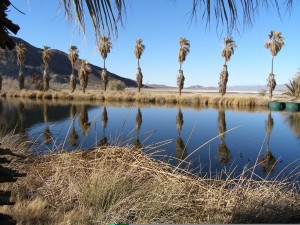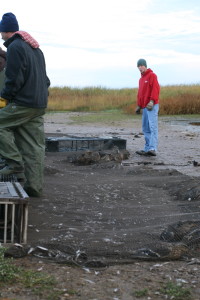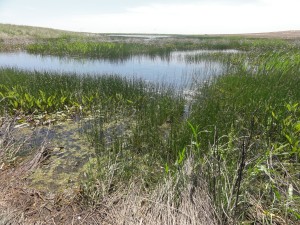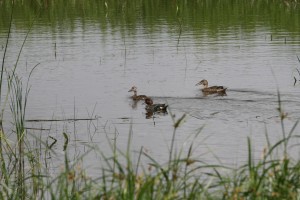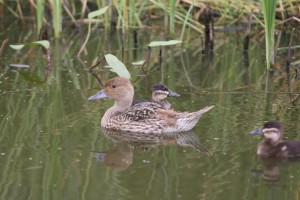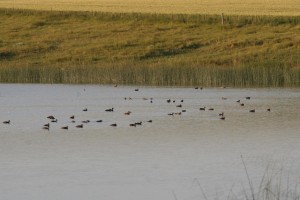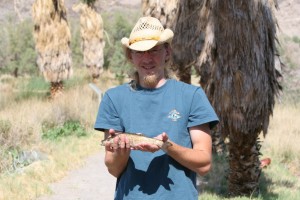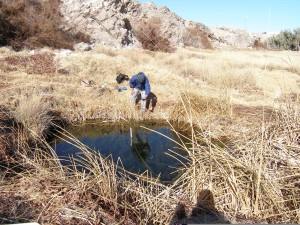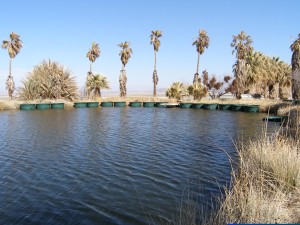This sampling technique is great for surveying various depths in a body of water. You lower the opened horizontal cylinder down into the water at the depth you want to sample and let loose a weight. The weight travels down the string that hits a switch which closes the ends (through a rubber elastic band). This technique is great for giving you a representative sample at a specific depth. The design of the contraption is pretty much always similar to these.
While I was studying the life history of the Mohave Tui Chub in California, we used this technique to survey the zooplankton distribution in Lake Tuende and MC Spring.
